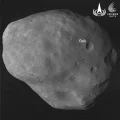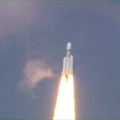
A Japanese start-up firm called Ispace announced on Wednesday, April 26, that its quest to become the first business to land on the Moon had failed, but it stated it would continue with future missions.
The Mission
Just before the Hakuto-R lander was supposed to come down in the 87-kilometre-wide Atlas crater on the near side of the Moon, the Japanese company lost contact with it. At 12:40 p.m. on Tuesday, the spacecraft was in position for an autonomous landing.
As per The Deccan Herald, engineers gathered to check the spacecraft’s data could be seen with tense expressions in the broadcasts from ispace’s control center in Tokyo. When ground controllers stopped getting the live data feed from the car-sized Hakuto-R lander, launched in December from Cape Canaveral atop a SpaceX Falcon 9 rocket, the ispace executives’ lively conversations changed to silent anticipation.
In statements made a few minutes after the landing attempt, Takeshi Hakamada, founder and CEO of ispace, stated that ground staff were linked to the spacecraft until the “very end” of the descent phase but were unable to make contact again.
Lesson Learned
Despite the botched landing attempt, Hakamada declared himself “very proud” of the ispace crew. Another lunar lander from the Japanese business will be launched on Mission 2 in 2024, and Mission 3, with a more extensive spacecraft design, is now in the early stages of development, with a launch targeted for 2025. Two miniature communications relay satellites will go with Mission 3 to contact Earth from the far side of the Moon.
Despite the crash landing, Hakamada said Ispace’s Mission 1 is a “great achievement” since it will bring experience and expertise to help plan the next mission. Up to the last seconds of the landing process, engineers gathered “valuable data and know-how” during the Hakuto-R lander’s journey to the Moon.
The moon landing attempt by ispace was the second attempt by a privately-funded spacecraft to make contact with the lunar surface. The Israeli Beresheet mission, designed by a non-profit organization, crashed on the Moon during a landing attempt in 2019.






Leave a Reply